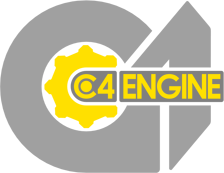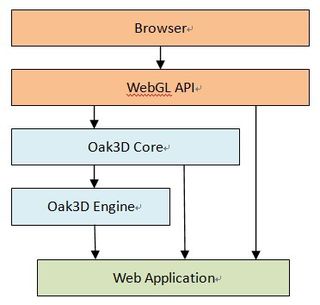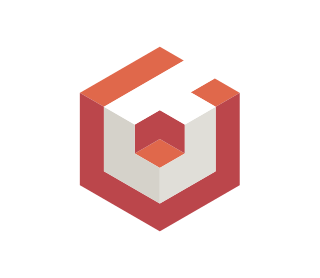X3D is a set of royalty-free ISO/IEC standards for declaratively representing 3D computer graphics. X3D includes multiple graphics file formats, programming-language API definitions, and run-time specifications for both delivery and integration of interactive network-capable 3D data. X3D version 4.0 has been approved by Web3D Consortium, and is under final review by ISO/IEC as a revised International Standard (IS).
The Khronos Group, Inc. is an open, non-profit, member-driven consortium of 170 organizations developing, publishing and maintaining royalty-free interoperability standards for 3D graphics, virtual reality, augmented reality, parallel computation, vision acceleration and machine learning. The open standards and associated conformance tests enable software applications and middleware to effectively harness authoring and accelerated playback of dynamic media across a wide variety of platforms and devices. The group is based in Beaverton, Oregon.

GeaBios is a free (non-profit) "Slovene Citizen Oriented Information Service", and the name stands for Geo Enabled And Better Internet Oriented Services.

The C4 Engine is a proprietary computer game engine developed by Terathon Software that is used to create 3D games and other types of interactive virtual simulations for PlayStation 5, PlayStation 4, PlayStation 3, Windows, Mac OS X, Linux, and iOS.
3DMLW is a discontinued open-source project, and a XML-based Markup Language for representing interactive 3D and 2D content on the World Wide Web.

WebGL is a JavaScript API for rendering interactive 2D and 3D graphics within any compatible web browser without the use of plug-ins. WebGL is fully integrated with other web standards, allowing GPU-accelerated usage of physics, image processing, and effects in the HTML canvas. WebGL elements can be mixed with other HTML elements and composited with other parts of the page or page background.

Away3D is an open-source platform for developing interactive 3D graphics for video games and applications, in Adobe Flash or HTML5. The platform consists of a 3D world editor, a 3D graphics engine, a 3D physics engine and a compressed 3D model file format (AWD).

Oak3D is a free JavaScript library for 3D graphics development based on the HTML5 WebGL standard, dedicated in realizing the Web3D applications with GPU acceleration for all the front-end developers in an easy and efficient way.

Three.js is a cross-browser JavaScript library and application programming interface (API) used to create and display animated 3D computer graphics in a web browser using WebGL. The source code is hosted in a repository on GitHub.
CopperLicht is an open-source JavaScript library for creating games and interactive 3D applications using WebGL, developed by Ambiera. The aim of the library is to provide an API for making it easier developing 3D content for the web. It is supposed to be used together with its commercial 3D world editor CopperCube, but it can also be used without.
WebSharper is an open-source and commercial web-programming framework that allows web developers to create and maintain complex JavaScript and HTML5 front-end applications in the F# programming language. Other than a few native libraries, everything is F# source.

Google Chrome Experiments is an online showroom of web browser based experiments, interactive programs, and artistic projects. Launched on March 1, 2009, Google Chrome Experiments is an official Google website that was originally meant to test the limits of JavaScript and the Google Chrome browser's performance and abilities. As the project progressed, it took the role of showcasing and experimenting latest open-source web-based technologies, such as JavaScript, HTML, WebGL, Canvas, SVG, CSS, and some others. All the projects on Chrome experiments are user submitted and are made using open source technologies. As of February 24, 2015, there were 1,000 different Chrome projects posted on the website.

StormEngineC is a free and open-source 3D graphics library written in JavaScript that uses various HTML5 features such as WebGL, WebCL, and WebSockets. The library provides a way to load objects in the OBJ or Collada format and adds them to physical simulations.
In computer science and visualization, a canvas is a container that holds various drawing elements. It takes its name from the canvas used in visual arts. It is sometimes called a scene graph because it arranges the logical representation of a user interface or graphical scene. Some implementations also define the spatial representation and allow the user to interact with the elements via a graphical user interface.

Clara.io is web-based freemium 3D computer graphics software developed by Exocortex, a Canadian software company. The free or "Basic" component of their freemium offering, however, places severe restrictions, such as on saving models and importing texture maps, which are undisclosed in the company's own descriptions of their plans.

Godot is a cross-platform, free and open-source game engine released under the permissive MIT license. It was initially developed in Buenos Aires by Argentine software developers Juan Linietsky and Ariel Manzur for several companies in Latin America prior to its public release in 2014. The development environment runs on many platforms, and can export to several more. It is designed to create both 2D and 3D games targeting PC, mobile, and web platforms and can also be used to develop non-game software, including editors.

glTF is a standard file format for three-dimensional scenes and models. A glTF file uses one of two possible file extensions: .gltf (JSON/ASCII) or .glb (binary). Both .gltf and .glb files may reference external binary and texture resources. Alternatively, both formats may be self-contained by directly embedding binary data buffers. An open standard developed and maintained by the Khronos Group, it supports 3D model geometry, appearance, scene graph hierarchy, and animation. It is intended to be a streamlined, interoperable format for the delivery of 3D assets, while minimizing file size and runtime processing by apps. As such, its creators have described it as the "JPEG of 3D."

Art of Illusion is a free software, and open source software package for making 3D graphics.

Babylon.js is a JavaScript library and 3D engine for displaying real time 3D graphics in a web browser via HTML5. The source code is available on GitHub and distributed under the Apache License 2.0.

Phaser is a 2D game framework used for making HTML5 games for desktop and mobile. It is free software developed by Photon Storm.











